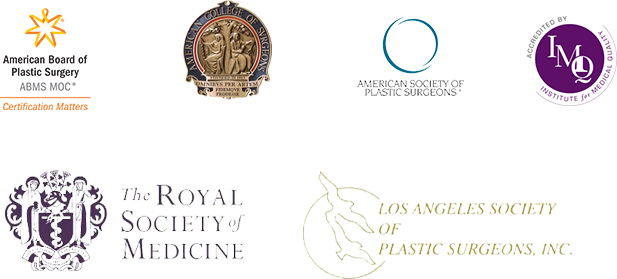Posted in Home
When considering which facelift procedure will benefit you most, it is best to consult with a qualified surgeon and discuss your aesthetic goals. Dr. Calabria will help determine which method will meet your desired results – traditional facelift, mini facelift, or mid-face lift.
The Traditional Facelift
Traditional facelift surgery, or “rhytidectomy,” is intended to improve areas of the jawline and neck. Incisions are usually made within the natural creases in the hairline at the temples and in front, within, and behind the ear. Various degrees of alterations can be made within the layers of the face. In some cases, the deeper layers are adjusted by tightening the sagging muscles of the lower face and neck. Facial fat and tissue can be sculpted and redistributed, depending on the patient’s individual needs, and excess facial and neck skin can then be removed or repositioned. The traditional facelift will help to correct the dramatic signs of aging, restoring a more youthful contour to the face.
Mini Facelift
The mini facelift addresses the same areas as a traditional facelift but to a limited degree. This procedure typically involves shorter incisions at the temples, around the ears, and possibly within the lower eyelids or under the upper lip to produce minimal scarring. A mini facelift usually provides overall skin tightening to the neck and lower third of the face. During this procedure, the skin is gently lifted from the underlying tissue and pulled taut. The results of a mini facelift typically last shorter than a traditional facelift because the underlying structures are not usually addressed. Rather, the mini facelift is usually best for patients with very early signs of aging, and desire a quick and discreet procedure to correct minimal laxity in their lower face around the jaw. Most mini facelift patients are younger than traditional facelift patients or have had a previous facelift that needs minimal maintenance.
Mid-Face Lift
The mid-face lift (“cheek lift)” is designed to correct signs of aging in the nasolabial folds, below the lower eyelid, and in the cheeks. It does not target the jawline or neck. Incisions for the mid-face lift are often made at the temple and inside the mouth, as well as in front of the ear. Descending cheek skin, muscles, and tissues are then vertically adjusted toward the eyes for a more lateral projection of the cheeks. This procedure may be combined with fat grafting to restore fullness and provide more youthful cheek contours.
This facelift is often performed on younger people because it does not address aging in the jowls and neck that older patients usually possess. This procedure is more beneficial for patients whose signs of aging is limited to the mid-face region.
As Dr. Calabria mentioned, “Every face is different and a cookie cutter approach is deemed to fail.” Therefore, to schedule a consultation with Dr. Calabria to learn which method will meet your desired facial rejuvenation results, please call (310) 777-0069. During your visit with Dr. Calabria, you will be able to learn more about the details of each facelift method, including recovery, anesthesia, and potential risks and complications.
